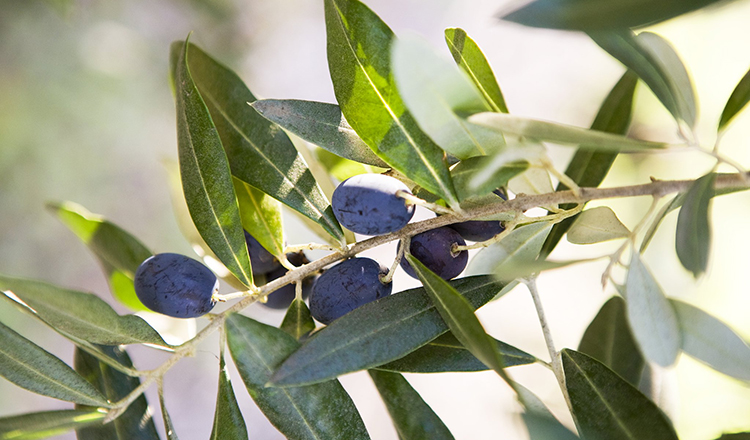
Olive oil can be fruity, nutty, sweet, zesty, peppery, rich, intense, and assertive; mild, mellow, light or heavy, subtle, and delicate; opaque or clear, deep olive green, pale green, gold-green, golden, or pale yellow. Like wine, no two olive oils are exactly alike.
The most wildly-available olive oils in the United States are made from olives grown in Spain, Italy, and Greece, though that does not necessarily indicate where the oil was produced. Look for oils that are of a single origin, meaning the olives were grown on the same farm where they were pressed.
The finest oil has the lowest free acidity. Virgin olive oil that has a free acidity of not more than 0.8% and has a noticeable fruitiness is classified as “extra-virgin olive oil.” This oil has been cold-pressed without the addition of heat. The most widely marketed grade of olive oil is simply labeled “olive oil.” This oil is a blend of refined olive oil and virgin olive oil. The amount of virgin olive oil in a blended oil varies, depending on the flavor desired by the producer.
Oil is, of course, 100% fat, so any olive oil labeled “light” is simply just an overly refined oil that will retain less flavor. Don’t pay more for this oil, since you can purchase an inexpensive bottle of neutral oil like corn oil for a fraction of the cost.
Whenever possible, choose quality over quantity. Over time, oxygen will degrade the quality of your oil, so the bigger the bottle and the longer it takes you to use it, the lower the quality will be by the time you reach the bottom of the bottle. You’ll also want to choose a dark bottle or stainless steel jug, to help limit the oil’s exposure to light, which can also impact its quality.
Olive oils area at their best within the first year of their production, so choosing a fresh oil is important. The extra-virgin olive oils of small producers vary in taste from year to year, much like wines do. You can conduct an olive oil tasting the same way you would a “blind” wine tasting. Record your impressions as you taste your way through three or four oils.
Before you taste each olive oil, look at the color of the liquid. Next, smell each oil, noting any aroma—the smell of olives—and bouquet—the “nose” of the oil. Professional olive oil tasters often rub a small amount of olive oil on their wrists to get a full sense of the oil’s bouquet.
Taste the oil, using either a nonreactive spoon or a piece of bread. Finally, and perhaps most importantly, ask yourself: Do I like this oil?

Loved it!
thank you!
would like to hear more details of each different olive oil production region.
What olive oil do you use in the restaurants?
Though some of the restaurants and chefs may have personal favorites or specialty oils that they use for certain dishes, our all-purpose olive oil is Colavita extra-virgin.
Since CIA is in St. Helena could you give us some positive thoughts about the Olive Press in Sonoma? How do their oils compare with your standards? We like several of their oils.
When I was younger, I remember almost always using Virgin oil, it was a grade between extra virgin and pure and seems to have fallen out of favor as I have not seen it in years. I thought is had a higher smoke point than evoo. Am I dreaming about all of this? Is it still possible to find Virgin (second press) olive oil?
I remember that, too. It’s really a matter of marketing language these days, and many of the oils that aren’t extra-virgin or first-pressed are now just sold as blends. More refined olive oils do have a marginally higher smoke point, but still lower than other less expensive vegetable oils.
Thanks. Quite informative even though i have been cooking with olive oil for most of my 81 years.
Jerry Mabli